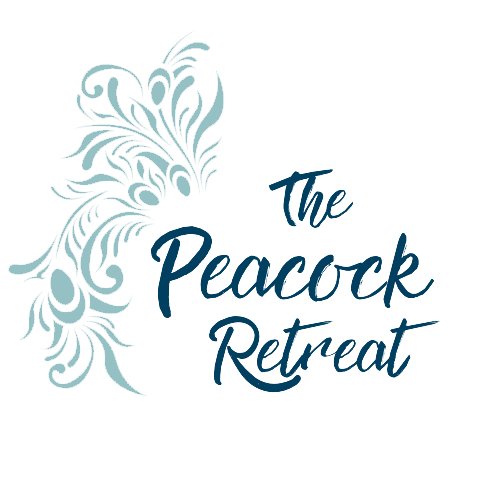Why Massage Should be Available on Prescription?
According to Government prescription data, in 2017-2018, just over a quarter of all adults in the UK were dispensed at least one prescription for a drug in the five main categories – Benzodiazepines (anxiety, Z drugs a.k.a sleeping tablets), Gabapentinoids (epilepsy, neuropathic pain and anxiety), Opioids (non-cancer chronic pain) or Anti-depressants. A truly shocking figure.
Drugs like these are important but might there be something else that could be prescribed alongside these to help boost their effectiveness or maybe even prevent a need for them in the first place?
Here is why I think there just might be, and although it might not yet be available on prescription from your GP, it is something you can easily prescribe for yourself!
How Your Body Responds to Stress
The sympathetic nervous system, often referred to as the "fight or flight" response, is responsible for mobilising our body's resources to deal with perceived threats or dangers. When activated, it triggers a cascade of physiological changes, including increased heart rate, elevated blood pressure, and heightened muscle tension, all of which are essential for survival in acute situations.
However, in our modern lives, the sympathetic nervous system can become chronically activated, leading to a myriad of health issues, including anxiety, insomnia, and even cardiovascular problems. This is where massage therapy plays a transformative role. Through the gentle manipulation of soft tissues and targeted pressure on specific trigger points, massage triggers the parasympathetic nervous system, often referred to as the "rest and digest" response.
By activating the parasympathetic nervous system, massage initiates a cascade of relaxation responses throughout the body. Heart rate slows, blood pressure decreases, and muscle tension releases, allowing the body to enter a state of deep relaxation and restoration. Moreover, massage stimulates the release of endorphins and oxytocin, often referred to as "feel-good" hormones, which further enhance feelings of well-being and contentment and reduce feelings of anxiety and even pain.
Indian Head Massage for instant anxiety and pain relief
Originating from the Ayurvedic tradition in India over a thousand years ago, Indian head massage, also known as champissage, targets key areas of the head, neck, and shoulders. This therapeutic technique involves a series of rhythmic movements, including gentle kneading, tapping, and circular motions, designed to release built-up tension and promote relaxation.
One of the primary benefits of Indian head massage is its ability to relieve stress by stimulating the flow of blood, oxygen, and nutrients to the brain. As the therapist applies pressure to specific points on the scalp and neck, it helps to increase circulation, resulting in a calming sensation and mental clarity. Additionally, this massage technique can alleviate headaches, migraines, and eye strain, which are common symptoms of stress-induced tension.
Beyond its physical benefits, Indian head massage also has profound effects on mental well-being. The soothing touch and repetitive motions induce a state of deep relaxation, reducing levels of cortisol, the stress hormone, in the body. This not only alleviates immediate feelings of anxiety but also promotes better sleep quality and overall mood stability.
Taking only around 30 minutes, an Indian Head Massage is a quick and affordable way to incorporate a regular stress-busting massage into your self-care plan for better physical and mental health.
Acupressure facial massage
Combining Indian head massage and acupressure facial massage into a holistic wellbeing package offers a comprehensive approach to stress relief and self-care. Beyond the physical benefits, this integrated approach addresses the interconnectedness of the mind, body, and spirit, fostering a deep sense of balance and harmony. The face, in the same way as our feet, contains many acupressure points that correspond to different parts of the body where we may be holding on to harmful stress. An acupressure facial massage helps to stimulate healing in these areas whilst at the same time relieving the local tension we can hold on to in the forehead, around the eyes and in the jaw.
During a holistic facial, clients not only experience the relaxation and rejuvenation of massage therapy but also benefit from the therapeutic properties of natural skincare products. From aromatic essential oils to nourishing botanical extracts, these holistic formulations enhance the overall sensory experience, promoting deep relaxation and inner peace.
Massage is sometimes considered a ‘treat’ or to be an ‘indulgence,’ but as I explained in last week’s blog post, chronic stress can be a killer and so massage should be considered as an important part of your overall health and wellbeing prescription.
Reiki Relaxation
Not a fan of massage? That’s not a problem.
Lots of people find the idea of having a stranger, or even a partner, touching their body quite uncomfortable or even down-right stressful. The good news is that you can get the same stress-busting and deep relaxation -inducing benefits of massage from a simple Reiki Relaxation treatment.
During a Reiki treatment:
You remain fully clothed throughout
It can be performed with very light touch or even completely ‘hands off’
The sense of deep relaxation is comparable with a full-body massage
It is equally as effective as massage in relieving the effects of chronic stress on the body and mind, and possibly even more




